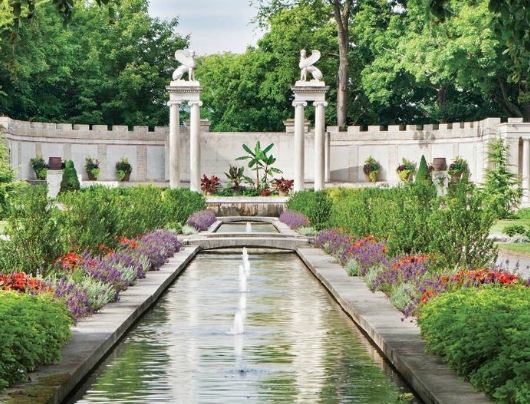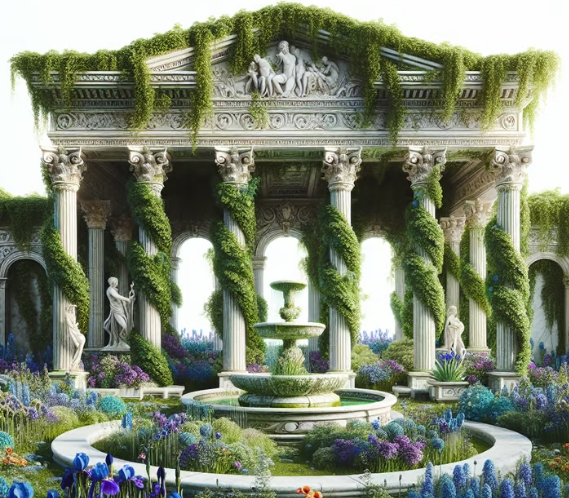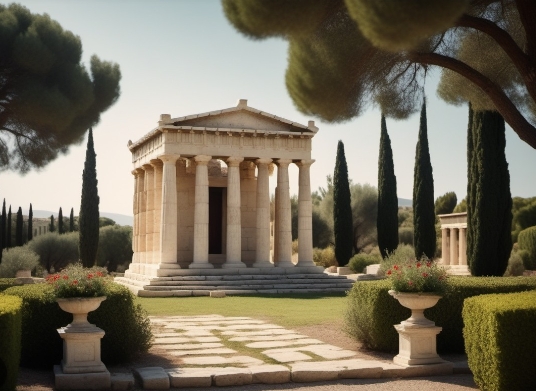Ancient Greek gardens are a model of the perfect combination of ancient art and nature. These gardens are not only a space for people to relax, but also a place that reflects the worldview and aesthetic taste of the ancient Greeks. In these gardens, sculptures play a vital role as decorative elements and become a bridge between man and nature.
Greek garden sculpture is the core part of ancient Greek garden design. Sculptures usually represent characters or scenes in ancient Greek mythology, such as Athena and Apollo. These statues not only give the garden a unique artistic atmosphere, but also convey the ancient Greeks’ awe of religion and mythology. These exquisite sculptures can often be seen in the center of the garden or beside the walkway, complementing the surrounding plant landscape to form a harmonious and beautiful outdoor art space.
The layout of ancient Greek gardens emphasizes symmetry and geometric beauty, and architecture and sculpture are closely integrated with natural landscapes. Colonnades, fountains, and beautifully carved stone seats are not only important parts of the garden, but also reflect the ancient Greeks’ pursuit of order and harmony. Garden sculptures were often carefully placed within these structures, creating a tranquil and solemn atmosphere.
Sculptures in ancient Greek gardens are not only a visual treat, but also a spiritual pleasure. Through the embellishment of Greek garden sculpture, these gardens became an ideal place for the ancient Greeks to meditate, explore philosophy, and communicate with nature. Even today, the influence of these sculptures and garden designs still exists in the design concepts of modern gardens.


